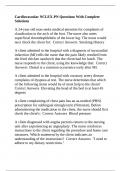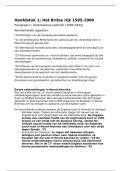Tentamen (uitwerkingen)
Test_Bank_for_Karps_Cell_and_Molecular_Biology_9th_Edition_Karp
- Vak
- Instelling
- Boek
Karp’s Cell and Molecular Biology delivers a concise and illustrative narrative that helps students connect key concepts and experimentation, so they better understand how we know what we know in the world of cell biology. This classic text explores core concepts in considerable depth, often a...
[Meer zien]












